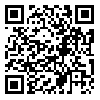Volume 28 - Supplementary
IBJ 2024, 28 - Supplementary: 373-373 |
Back to browse issues page
Download citation:
BibTeX | RIS | EndNote | Medlars | ProCite | Reference Manager | RefWorks
Send citation to:



BibTeX | RIS | EndNote | Medlars | ProCite | Reference Manager | RefWorks
Send citation to:
Anbari F, Pirzadeh N, Pirouzeh R, Mahmudimanesh M, Sadeghi A. Factors Affecting the Choice of Delivery Method and Attitudes Toward Delivery Types Among Pregnant Women in Esfarayen City. IBJ 2024; 28 :373-373
URL: http://ibj.pasteur.ac.ir/article-1-4724-en.html
URL: http://ibj.pasteur.ac.ir/article-1-4724-en.html
Abstract:
Introduction: Nowadays, cesarean delivery has become a culture for many people. Despite its irreparable complications, more than half of the women voluntarily do that. The present study was conducted to determine the factors influencing the type of delivery and attitude toward pregnant women in Esfarayen City.
Methods and Materials: This study was a descriptive-analytical type conducted cross-sectionally in Esfarayen in 2023. The study population was all pregnant women who were referred to the health centers of Esfarayen city; 263 people were examined by stratified sampling method from all nine health centers and were available. Data were collected by using a questionnaire consisting of demographic information and a form for measuring the attitude towards natural childbirth and cesarean section. Data analysis was performed using SPSS version 24 software, which used descriptive and analytical statistical tests.
Results: The average age of 200 pregnant women participating in this study was 28.47 ± 5.61. Most of the people (n = 103 [39.5%]) studied chose cesarean delivery. Among them, 39% (n = 102) had a slight difference with natural elective delivery and 39% (n = 56)) had not yet made a decision. Regarding the attitude towards natural childbirth, 3.8% (n = 9) had a negative attitude, 70.5% (n = 185) had a neutral attitude, and 25.6% (n = 67) had a positive attitude. Also, 11.4% (n = 29) had a negative attitude, 84.8% (n = 223) had a neutral attitude, and 3.8% (n = 9) had a positive attitude about the attitude towards cesarean section. Most participants (n = 110 [42%]) disagreed that cesarean section is more straightforward than natural delivery. A significant relationship was observed between previous and elective delivery with the attitude to cesarean section (p = 0.05). There was a significant relationship between age, duration of marriage, chronic illness, type of previous delivery, the person proposing the type of delivery, the effect of free natural delivery, and live child with the type of delivery (p = 0.05).
Conclusion and Discussion: Our study reveal that women with age of over 25 years who have been married for 10 years or more, without suffering from a chronic disease, with cesarean section experience in a previous birth, with the type of delivery suggested by a doctor, without the influence of free natural childbirth, and also has a living child are more inclined to choose cesarean section for childbirth. Therefore, it is necessary to prioritize these people in health programs when planning and designing educational interventions.

Methods and Materials: This study was a descriptive-analytical type conducted cross-sectionally in Esfarayen in 2023. The study population was all pregnant women who were referred to the health centers of Esfarayen city; 263 people were examined by stratified sampling method from all nine health centers and were available. Data were collected by using a questionnaire consisting of demographic information and a form for measuring the attitude towards natural childbirth and cesarean section. Data analysis was performed using SPSS version 24 software, which used descriptive and analytical statistical tests.
Results: The average age of 200 pregnant women participating in this study was 28.47 ± 5.61. Most of the people (n = 103 [39.5%]) studied chose cesarean delivery. Among them, 39% (n = 102) had a slight difference with natural elective delivery and 39% (n = 56)) had not yet made a decision. Regarding the attitude towards natural childbirth, 3.8% (n = 9) had a negative attitude, 70.5% (n = 185) had a neutral attitude, and 25.6% (n = 67) had a positive attitude. Also, 11.4% (n = 29) had a negative attitude, 84.8% (n = 223) had a neutral attitude, and 3.8% (n = 9) had a positive attitude about the attitude towards cesarean section. Most participants (n = 110 [42%]) disagreed that cesarean section is more straightforward than natural delivery. A significant relationship was observed between previous and elective delivery with the attitude to cesarean section (p = 0.05). There was a significant relationship between age, duration of marriage, chronic illness, type of previous delivery, the person proposing the type of delivery, the effect of free natural delivery, and live child with the type of delivery (p = 0.05).
Conclusion and Discussion: Our study reveal that women with age of over 25 years who have been married for 10 years or more, without suffering from a chronic disease, with cesarean section experience in a previous birth, with the type of delivery suggested by a doctor, without the influence of free natural childbirth, and also has a living child are more inclined to choose cesarean section for childbirth. Therefore, it is necessary to prioritize these people in health programs when planning and designing educational interventions.

| Rights and permissions | |
 |
This work is licensed under a Creative Commons Attribution-NonCommercial 4.0 International License. |







.png)
